Year 2
The science inquiry skills and science as a human endeavour strands are described across a two-year band. In their planning, schools and teachers refer to the expectations outlined in the achievement standard and also to the content of the science understanding strand for the relevant year level to ensure that these two strands are addressed over the two-year period. The three strands of the curriculum are interrelated and their content is taught in an integrated way. The order and detail in which the content descriptions are organised into teaching and learning programs are decisions to be made by the teacher.
Incorporating the key ideas of science
From Foundation to Year 2, students learn that observations can be organised to reveal patterns, and that these patterns can be used to make predictions about phenomena.
In Year 2, students describe the components of simple systems, such as stationary objects subjected to pushes or pulls, or combinations of materials, and show how objects and materials interact through direct manipulation. They observe patterns of growth and change in living things, and describe patterns and make predictions. They explore the use of resources from Earth and are introduced to the idea of the flow of matter when considering how water is used. They use counting and informal measurements to make and compare observations and begin to recognise that organising these observations in tables makes it easier to show patterns.
(source: www.australiancurriculum.edu.au)
Achievement Standard
By the end of Year 2, students describe changes to objects, materials and living things. They identify that certain materials and resources have different uses and describe examples of where science is used in people’s daily lives.
Students pose and respond to questions about their experiences and predict outcomes of investigations. They use informal measurements to make and compare observations. They record and represent observations and communicate ideas in a variety of ways.
(source: www.australiancurriculum.edu.au)
- Plus Plan
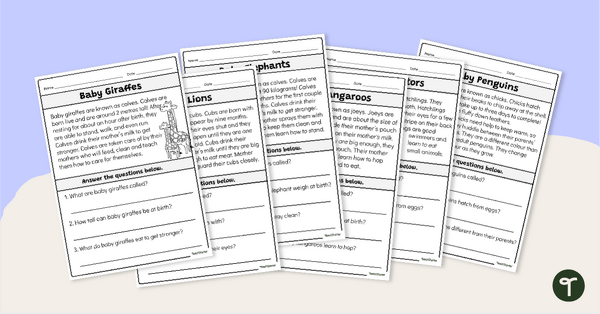
Baby Animals Reading Worksheets - Year 1-2
Learn about animals and their babies with a pack of printable Animal Babies Reading Worksheets for Years 1 & 2.
- Free Plan
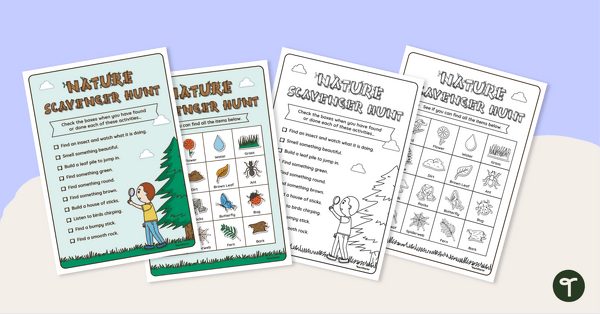
Nature Scavenger Hunt Printable
Make outdoor play a learning opportunity with exciting nature treasure hunts..
- Plus Plan
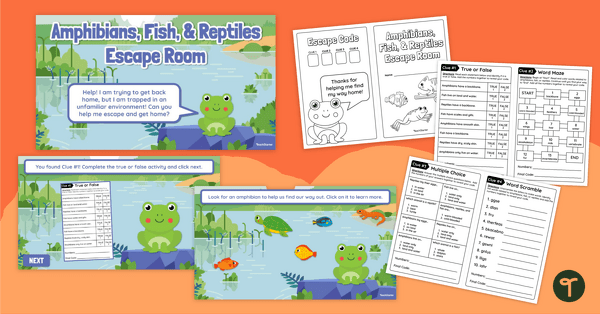
Amphibians, Fish and Reptiles Escape Room
Help your students discover the unique characteristics of amphibians, fish, and reptiles with an exciting Animal Science Escape Game!
- Plus Plan
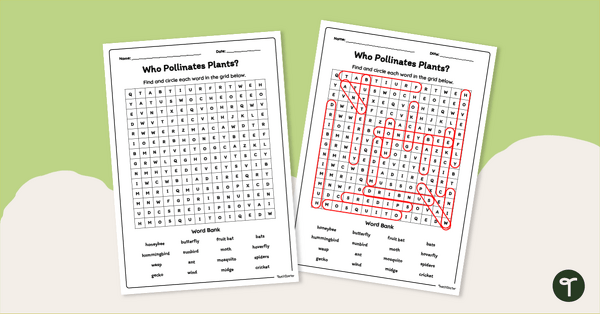
Who Pollinates Plants? Word Search
Introduce your students to a world of pollinators with a printable Who Pollinates Plants? Word Search.
- Plus Plan
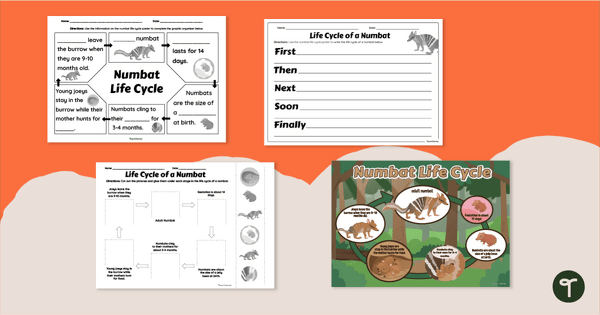
Numbat Life Cycle Poster & Worksheets
Explore the life cycle of a numbat with a printable poster and Numbat Life Cycle Worksheet Pack.
- Free Plan
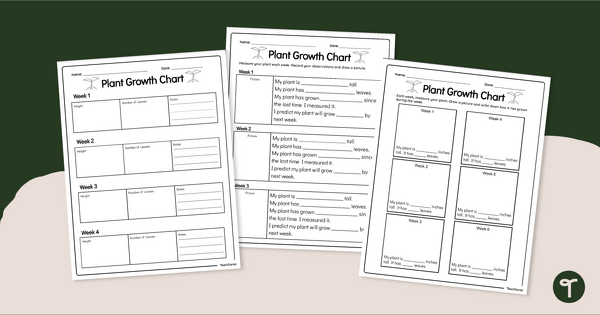
Plant Growth Chart Worksheet
Record the growth and changes in a plant over time with one of our differentiated plant growth charts.
- Plus Plan
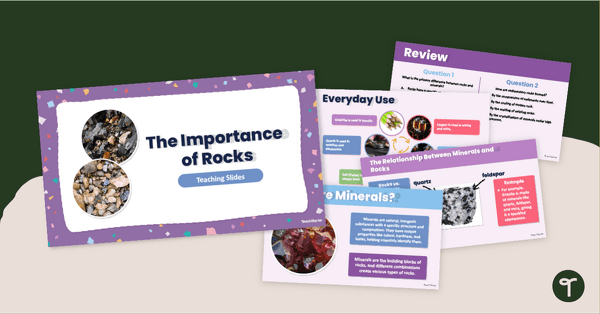
Why Are Rocks Important? - Teaching Slides
Discover why rocks are important with an engaging teaching presentation for early years students.
- Plus Plan
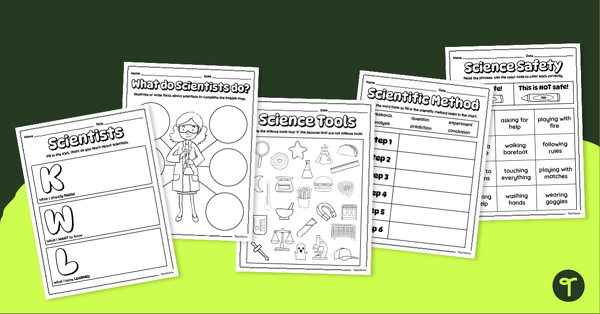
Scientists and What They Do Worksheet Pack
Help your students learn what a scientist is and what scientists do with a set of printable science worksheets for early learners.
- Plus Plan
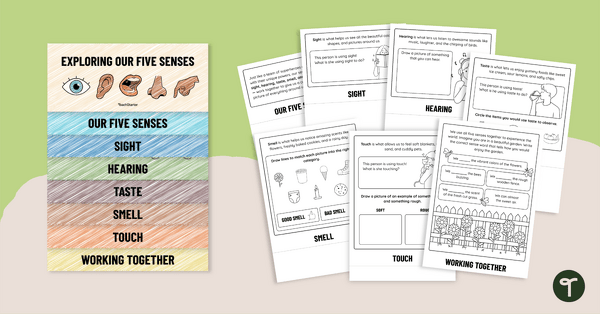
Five Senses Activity Flipbook
Explore the five senses with your students using this engaging five senses activity flipbook.
- Plus Plan
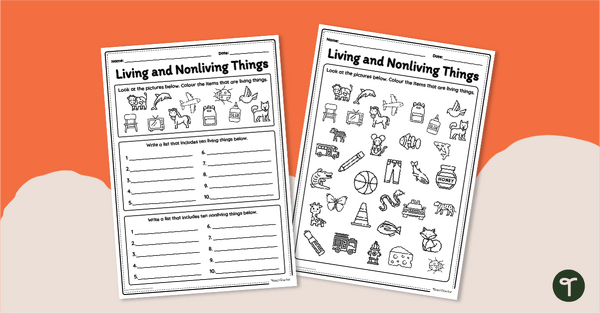
Identify Nonliving and Living Things - Printables
Download a pack of Living or Nonliving? Printables to help your students differentiate between living and nonliving organisms.
- Plus Plan
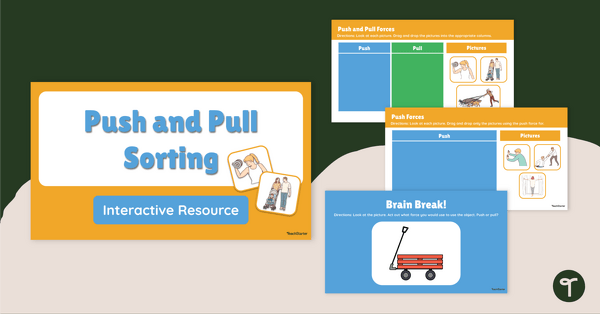
Push or Pull? Interactive Sorting Activity
Explore push and pull forces with your students by playing this interactive sorting game for lower primary students.
- Plus Plan
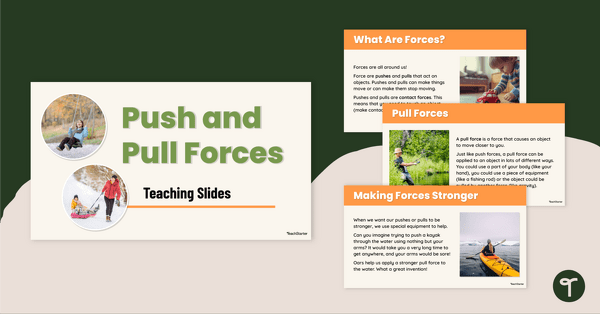
Push and Pull Forces Teaching Slides
Teach your students about push and pull forces with this comprehensive and age-appropriate teaching presentation for primary school science lessons.
- Plus Plan
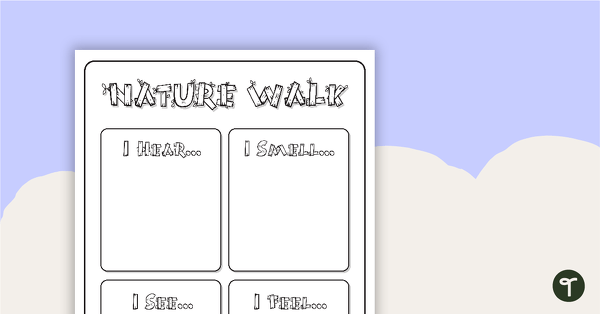
Nature Walk Senses Worksheet
Use this worksheet during a nature walk to encourage children to listen, smell, look and feel!
- Plus Plan
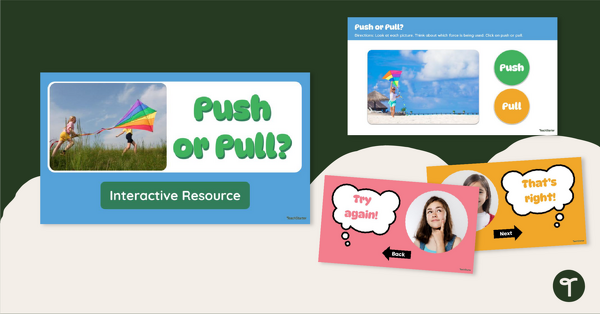
Push or Pull? Interactive Activity
Get students to determine whether a force is a push or a pull with this engaging digital game for early years science lessons.
- Plus Plan
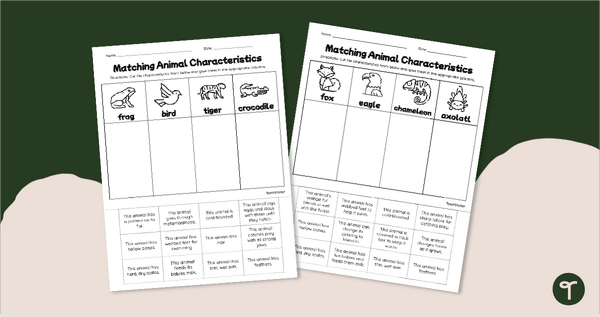
Characteristics of Living Things - Science Worksheets
Identify the characteristics of living things and animal classes with a pack of printable Animal Class Characteristic Worksheets.
- Plus Plan
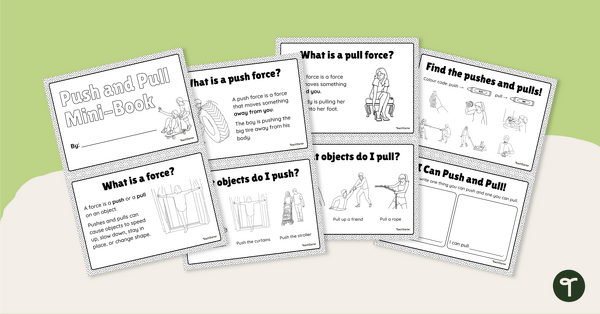
Pushes and Pulls Mini-Book
Explore pushes and pulls with your students with this printable mini-book perfect for early years science lessons.
- Plus Plan
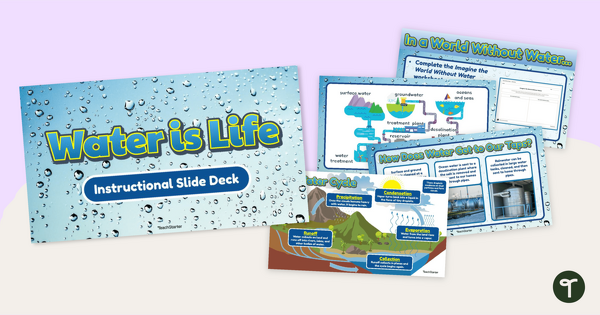
Water is Life - Instructional PowerPoint
Learn about the importance of water to life on Earth, along with where water comes from, with an instructional slide deck.
- Plus Plan
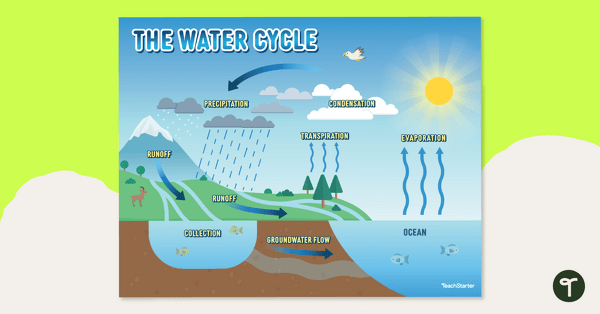
Water Cycle Diagram
Display this water cycle diagram when teaching about the continuous movement of water above and on the surface of the Earth.
- Plus Plan
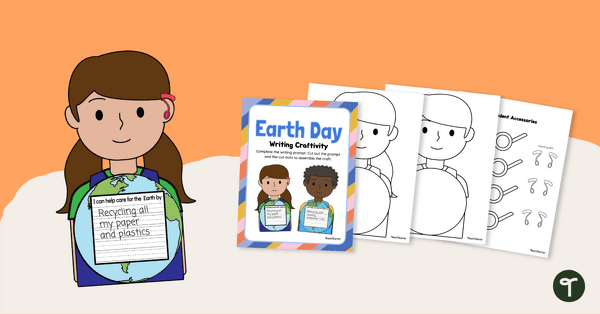
Earth Day Craft and Write
Create a fabulous Earth Day display with a printable Earth Day craft activity.
- Plus Plan
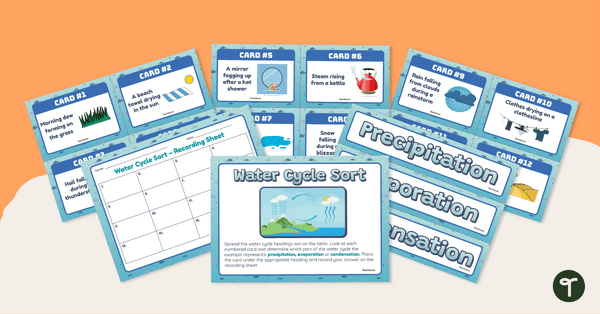
Water Cycle Sort – Sorting Activity
Use knowledge of the steps in the water cycle to categorise examples with this sorting activity.
- Plus Plan
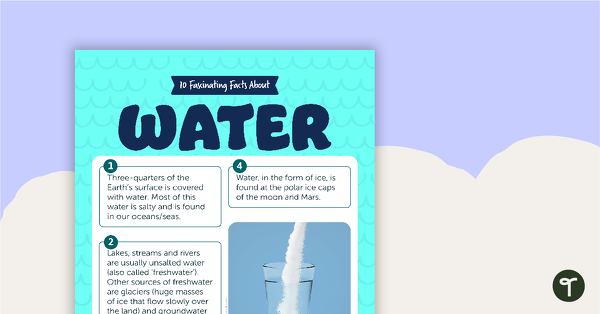
10 Fascinating Facts About Water – Worksheet
A comprehension worksheet for a magazine article from the Year 2 magazine (Issue 3).
- Plus Plan
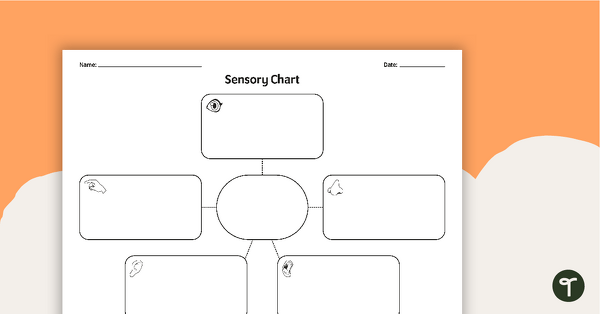
Sensory Chart Graphic Organiser
Observe and record observations of the world around you with a printable Sensory Chart Graphic Organiser.
- Plus Plan
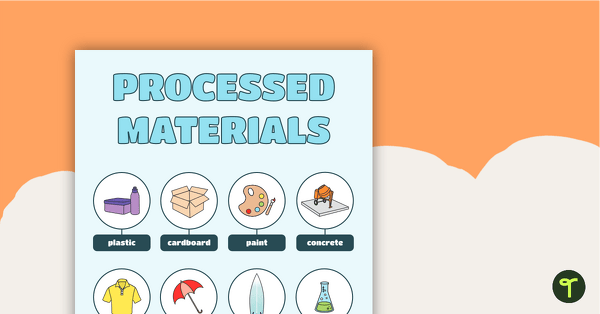
Processed Materials Poster
A poster displaying different processed materials and explaining what processed materials are.
- Plus Plan
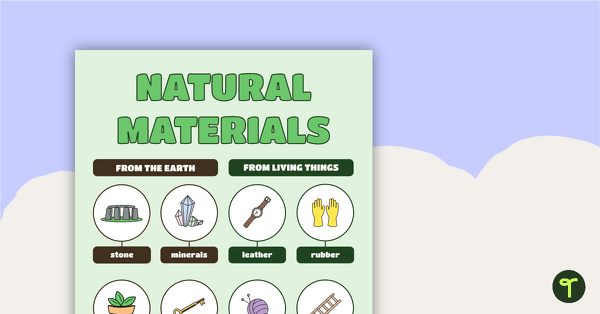
Natural Materials Poster
A poster displaying different natural materials and explaining what natural materials are.
- Plus Plan
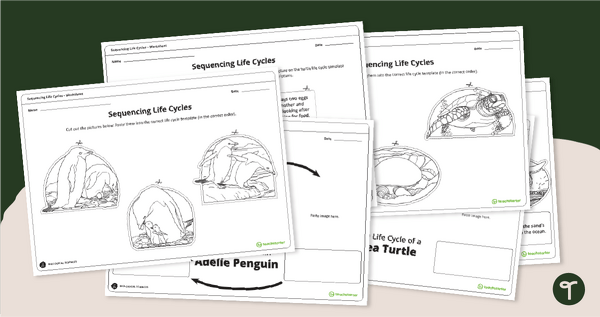
Life Cycle of a Penguin & Sea Turtle Worksheets
Learn about the life cycle of the Adelie penguin and sea turtle with a set of printable life cycle worksheets for year 3.
- Plus Plan
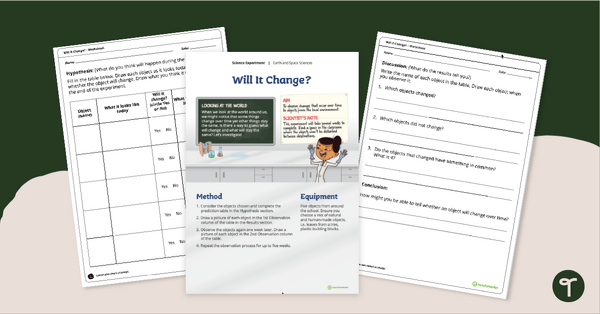
Science Experiment - Will It Change?
A science investigation in which the students observe changes that occur to various objects over time.
- Plus Plan
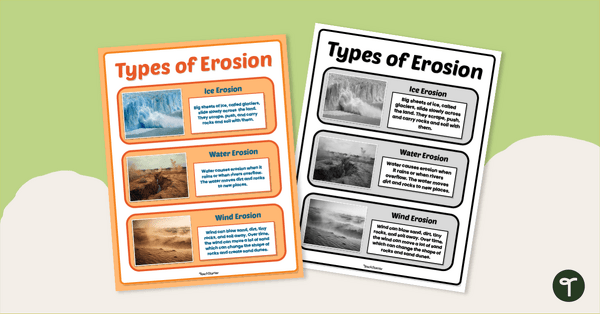
Soil Erosion Poster
Discover how wind, water, and ice change the Earth’s surface with a printable Soil Erosion Poster.
- Plus Plan
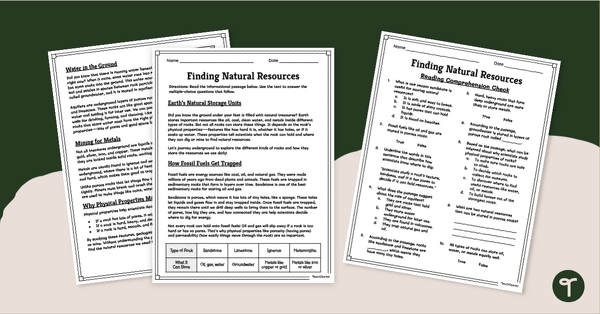
Earth’s Resources Worksheet - Natural Resources & Fossil Fuels (3-4)
Explore what's buried in rocks underground with a printable Earth’s Resources Worksheet for Year 4.
- Plus Plan
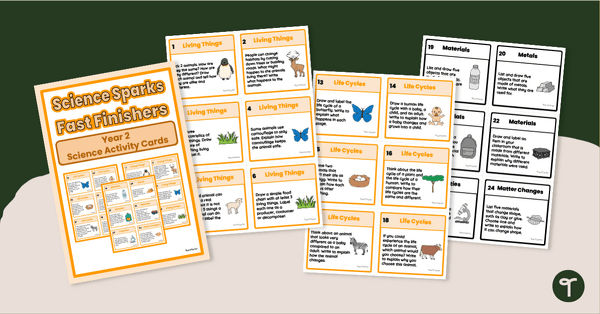
Science Sparks - Year 2 Science Activities for Fast Finishers
Use Science Sparks, a collection of year 2 science activities for fast finishers to review science standards during classroom downtime.
- Plus Plan
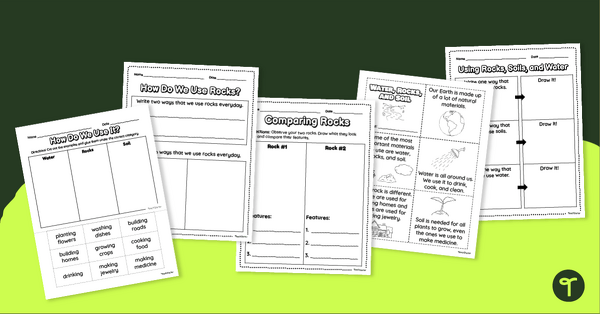
Using Rocks, Soils and Water - Year 2 Science Worksheets
Discover the importance of rocks, soils, and water as natural resources with a pack of printable Year 2 Science Activity Sheets.
- Plus Plan
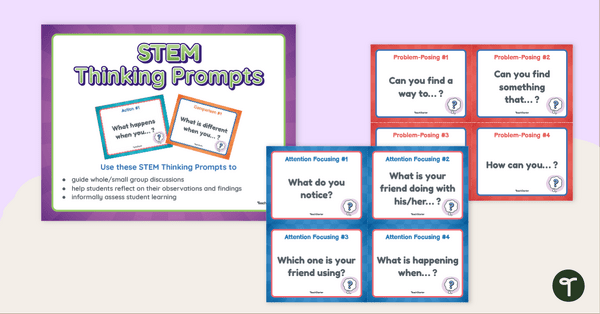
STEM Thinking Prompts - Higher Order Thinking Skills Questions
Use our printable STEM Higher Order Thinking Question cards to improve scientific conversation and critical thinking skills in your students.
- Plus Plan
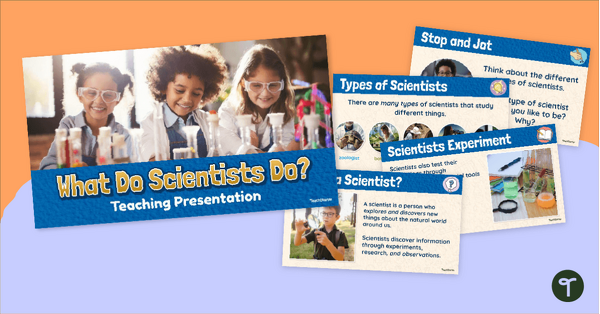
What Do Scientists Do? Teaching Slides
Discover what scientists do, the tools they use, and more with our 'What Do Scientists Do?' Teaching Presentation.